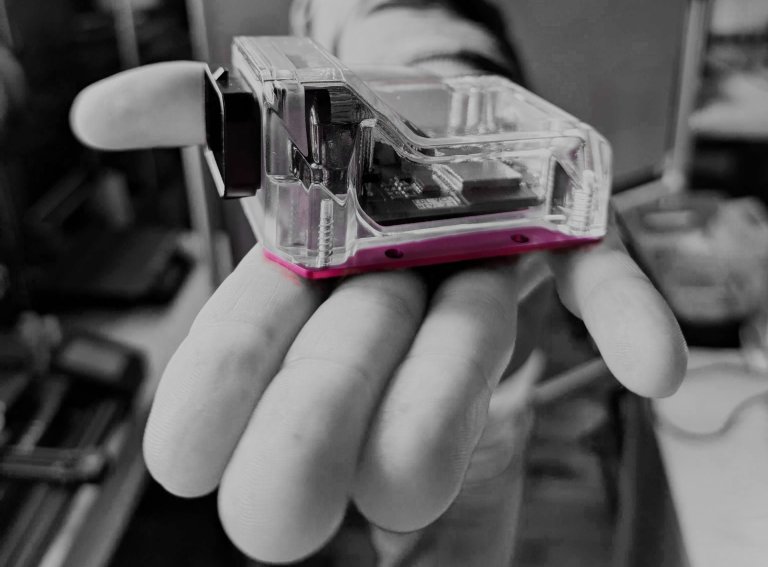After Segway launched its Max series shared e-scooter featuring the Max, Max Pro, Max Plus, Max Plus X, and Max S90L since 2019, the global micromobility giant now introduces its latest model in the series: the Max S100.
Described by Segway as a ‘significant leap and upgrade’ – everything about the new model has been designed to boost operator profitability and user experience. The model aims to achieve this through increased operational efficiency, a commitment to safety, a user-friendly design, durability and easy maintenance.
“The Max S100 is the most cost-efficient model in the Max series through its improved repairability and power consumption management,” says Yao Yao, Segway-Ninebot’s Strategic Product Manager of the Commercial Mobility Business Division. “It has been built to prioritise total cost of ownership.”
As the market shifts and the industry consolidates, Segway has been laser-focused on refining its technology based on extensive operator, city and user feedback. The Segway Max series has continuously iterated with new dashboards and optimised design details that not only empower operators to run their fleets more efficiently, but also delivers a safer and more comfortable riding experience for end users while meeting the changing needs of urban environments.
Zoomed in – LCD Dashboard
The Max S100’s LCD dashboard is one standout feature of the new e-scooter.
The dashboard’s intuitive screen display has a user interface which utilises Bluetooth connectivity to offer more functions than ever before in the Max series. On the dashboard is a welcome screen, navigation capabilities, speed display, battery level, geofence and zone indication to make riding interactive and convenient.
By prompting the rider with navigation instructions and no-go zone warnings, the dashboard aims to improve rider safety by eliminating the need for users to rely on their phones.
To assist operationally, the dashboard’s maintenance interface indicates the vehicle’s status, notifies staff when maintenance is required, and shows the types of issues through effective monitoring of the device’s status. This includes warning alerts, firmware updates, error messages, and other information settings.
“The LCD dashboard is designed to enhance user interaction and safety while meeting the industry’s evolving demands. It does this by enabling the vehicle to comply with local regulations to boost operational efficiency of fleets, and the customisable features of the Max S100 reflect our product design philosophy, offering tailored solutions to meet the specific needs of different operators.”

A refined design for lower operational costs
To extend mileage, the S100 is designed to optimise energy consumption by minimising standby power and enhancing energy efficiency during rides. As a result, the scooter can reach a range of 55 kilometres, reducing the need for battery swapping and cutting operational work.
The S100 scooter boosts operational efficiency with high-speed data transmission and a simpler bus structure. Using CAN bus communication, which is eight times faster than UART, the scooter can exchange data more quickly. This allows for real-time monitoring and faster responses to improve control and stability. Additionally, the CAN bus has been reduced from 8 pins to 5, cutting down on wiring complexity and costs for easier installation and increased reliability.
The e-scooter’s Gen3-Sg IoT includes precise positioning, onboard geofencing with a rapid response time, and an acoustic vehicle alerting system (AVAS). This enables real-time monitoring of the vehicle’s status to assist with daily operations. Potting technology, which encapsulates IoT components for protection, aims to reduce maintenance costs of these features.
To make maintenance easier for operational staff to conduct, Segway claims that consumable parts can be replaced in under six minutes. Key electronic components can be replaced in under seven minutes.
“The goal of this new design is to make the S100 easier to repair and more durable for long-lasting use.”
Furthermore, Segway has designed the Max series with cross-model component compatibility in mind for integration between models like the Max S100, Max S90L, and Max Plus X.
38% of the Max S100’s components are shared with the Max Plus X, with key compatible parts including the battery, IoT module, wheels, and tires. The model also features integrated components to reduce the number of parts and associated costs of maintaining them separately.
User safety and comfort
As important as operational efficiency is to Segway, another core pillar of the vehicle solution provider’s is a safe and comfortable riding experience.
“Our goal is to meet the evolving demands of the industry by providing operators with vehicles that comply with local regulations, while prioritising safety and delivering an exceptional riding experience.”
The Max S100 features a reinforced, lightweight aluminium stem made from a 7000-series alloy. It has been tested to withstand over a million cycles of 600N thrust force to prove its durability in extreme usage conditions.
Drawing on operational feedback, Segway has reinforced the entire vehicle frame, including high-stress areas and weaker points, without increasing the overall weight to ensure a stable ride.
The e-scooter also comes with updated tyres. While the front wheel uses a solid honeycomb tyre for riding comfort coupled with a front dual suspension system, the rear PU-filled tyre is designed for stability on various road conditions. The enclosed drum brake system of the S100 makes for a powerful stopping performance, where riders can stop suddenly without losing balance.
A wider 210mm foot pad is designed to improve rider stability and give enough space for both feet to be comfortably placed, and a 400W rated motor means the scooter can carry a 75kg load while tackling 14% inclines at a speed of 15 miles per hour.
Zoomed out – Main Features
To meet diverse local regulations and operational needs, the S100 offers three dashboard options: the LCD dashboard, dual independent dashboards (commonly found on the Max S90L), and a multifunction dashboard that includes features like wireless charging and more.
Boasting an IPX5 waterproof rating for the entire vehicle and an IPX7 rating for key electronic components such as the motor, battery pack, controller, and IoT systems, this scooter is designed to endure challenging conditions like rain and fog. This enhanced protection helps extend the scooter’s lifespan.
“We’ve been continuously updating the Max series to provide tailored micromobility solutions for each operator and the region they operate in.
“Leveraging extensive operational feedback and years of experience, the Max S100 represents our latest advancement in optimised vehicle design and cutting-edge technology, helping operators run efficient fleets with reduced operational costs.”



